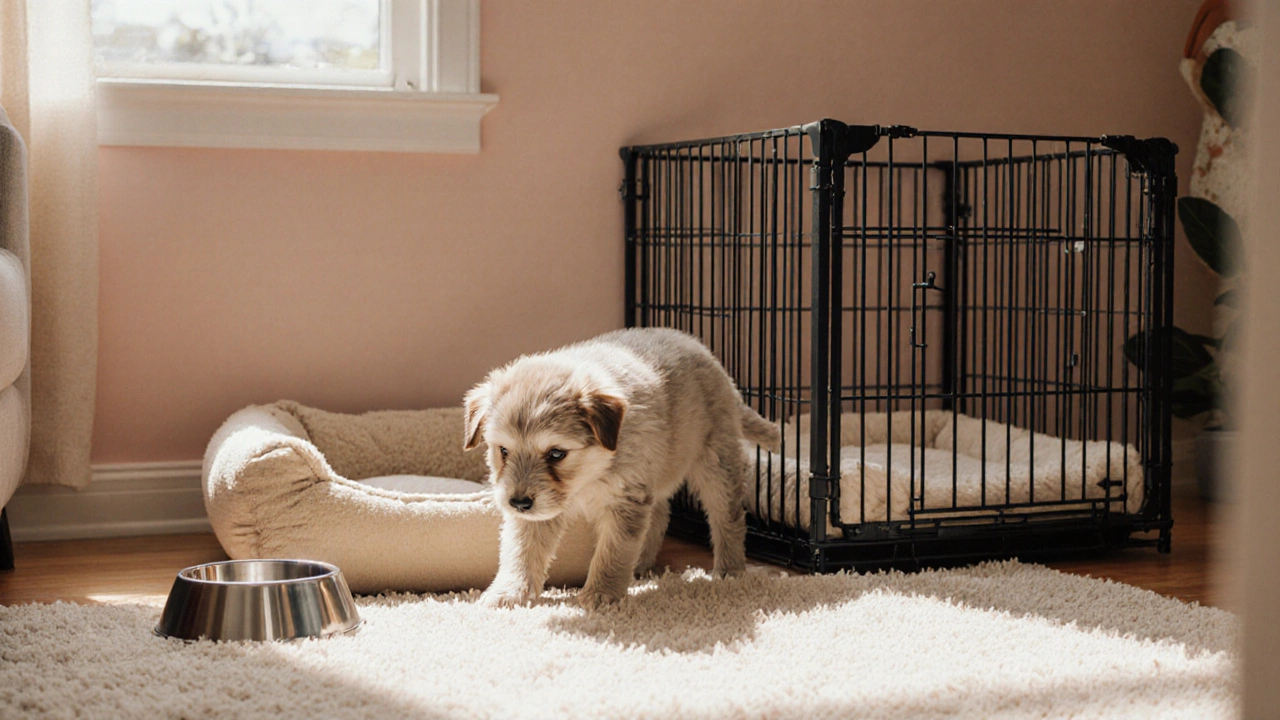Bringing a Puppy Home: What You Need to Know
When bringing a puppy home means welcoming a new four‑legged family member and setting up a safe, comfortable start, you’re also dealing with things like puppy crate training the practice of using a crate to help a pup learn bathroom habits and feel secure and puppy vaccination schedule the series of vet‑administered shots that protect a young dog from common diseases. These core steps connect to later topics such as puppy biting management strategies to curb nipping while the dog is still learning bite inhibition and puppy free‑roam timing guidelines for when a puppy can safely explore the house without a leash or crate. Understanding how each piece fits together makes the first weeks less stressful for you and your new companion.
Start by puppy‑proofing the rooms your pup will use. Remove loose cords, secure trash cans, and block off stairways. A sturdy bringing a puppy home checklist should include a well‑fitting collar or harness, a chew‑proof toy, and a comfortable crate or pen. Choose a crate that’s just big enough for the puppy to turn around—most vets recommend one that’s 1‑2 sizes larger than the dog’s adult height. Place the crate in a quiet corner with a soft blanket, and keep a water bowl nearby. For meals, set a schedule that matches the vaccination timeline: usually three small feedings a day until the puppy is six months old.
First‑Week Essentials
Crate training isn’t just about containment; it builds confidence. Begin by feeding one of the puppy’s meals inside the crate, then gradually increase the time the door stays shut. Keep sessions short—five to ten minutes at first—so the pup associates the crate with positive experiences rather than punishment. If the puppy whines, wait a minute before letting them out; this teaches them that calm behavior earns freedom.
Vaccinations follow a predictable pattern. Core shots—distemper, parvovirus, adenovirus, and parainfluenza—are typically given at 6‑8 weeks, then every three to four weeks until the pup is 16 weeks old. After the series, a rabies shot is required by law, usually at 12 weeks. Keeping a vaccination calendar helps you stay on track and avoids costly vet visits later.
Biting is a natural puppy behavior, but it needs correction early. Whenever the pup snaps during play, emit a sharp “No” and withdraw your hand. Offer a chew toy instead. Consistency is key: everyone in the household must respond the same way. By the time the puppy is three months old, most dogs start to understand bite inhibition if you’re firm and gentle.
Free‑roam timing depends on both mental and physical development. Around eight to ten weeks, many puppies can be allowed supervised access to a single room without a leash. Increase the area slowly, always watching for signs of anxiety or overstimulation. Never leave a puppy unattended in a large, unfenced space until you’re confident they’ve mastered basic commands and crate etiquette.
Choosing the right gear makes every step easier. A no‑pull harness reduces strain on tiny necks while teaching better leash manners. Look for a harness with adjustable straps and a front‑clip for gentle steering. For bedding, pick something washable and low‑pile to keep the crate clean. Our store offers a range of equestrian‑grade collars, sturdy leashes, and ergonomic crates that stand up to playful pups.
The next few weeks will be a blend of training, health checks, and bonding moments. Below you’ll find articles that dive deeper into each milestone—crate training tricks, night‑time pee‑pad decisions, the exact vaccine shots your puppy needs, how to stop puppy biting, and the safe age to let your pup free‑roam. Use those guides to keep the momentum going and give your new companion the best start possible.
Top Mistakes to Avoid When Bringing a Puppy Home
Discover the most common mistakes new owners make when bringing a puppy home and learn practical tips to avoid them, ensuring a smooth, stress‑free transition for your furry friend.
